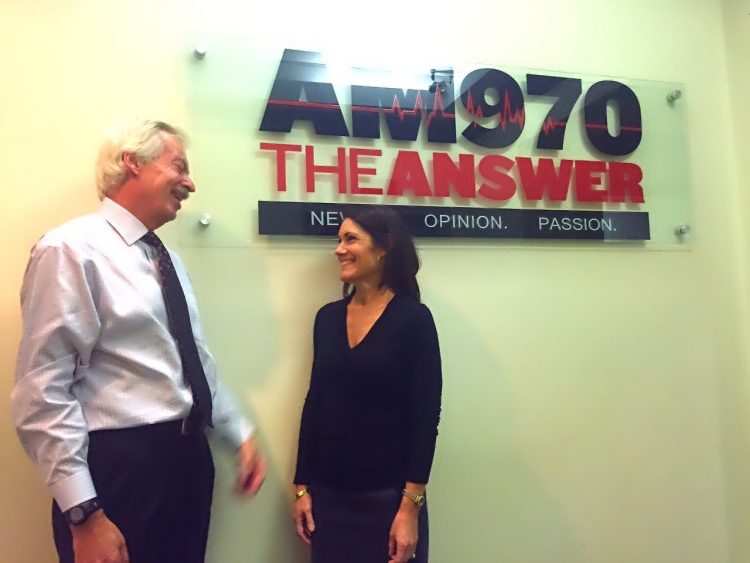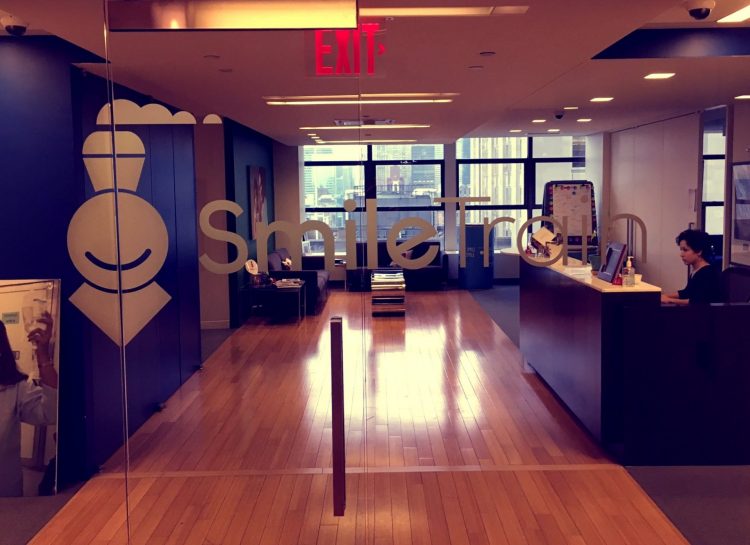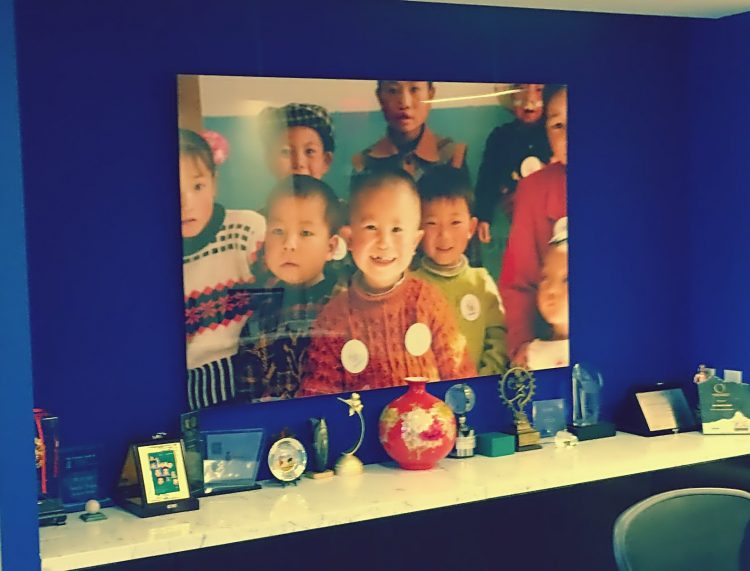Transcript
Denver: And now we’re going go over to East 26th Street of Manhattan and the headquarters of Smile Train. We’ll start with their CEO, Susannah Schaefer, and then hear from the members of the Smile Train staff.

Susannah: Cleft lip and palate and afflicts 170,000 births per year around the world. It tends to be more prevalent in the developing world. If you take a location like China, for instance, it could be one in every 500 births, and sometimes even more frequent. So, it’s genetic. The surgeons who we’ve worked with who are experts, nobody knows what causes cleft. But there’s definitely some sort of an environmental factor. If it’s maternal health, access to good nutrition, the environment, we don’t know what causes it.
When we started out at Smile Train, we wanted to solve one problem. We felt we could solve this problem because we look at it as a financial problem and not a medical problem because we can fix it through providing 100% free surgery.
Shari: …the best thing about working at Smile Train is, and I think that’s I get to market smiles on a daily basis. I’ve been around the world to see our patients in the field, which I think is really important. Seeing the work that we do with our local partners, which is the core of our model here at Smile Train, and watching a patient who has an untreated cleft get a new smile for the first time in their life is such a powerful thing that you cannot see or have happen at any other job that I’ve ever had in my entire life.

Smile Train Office
Adina: I’m always happy to come in to work. I think we all really respect each other here and do our best to deal with our differences, keeping that foremost in our mind. We want to respect each other. We want to know where everyone is coming from and how we can make sure to support our mission of creating new smiles as effectively as possible.
Another reason why I’m still here is because I’ve had such wonderful mentors here, and I’ve had a lot of people looking out for me and making sure that new opportunities came my way and that I was aware of them and able to take advantage of them.
Jessica: This is my third job out of college after a lot of internships as well and I’ve never felt a sense of community at a workplace like I have at Smile Train. And specifically when I first started, I think within my first two days, every single person in the whole office came and introduced themselves, wanted to learn my name, but also wanted to learn about me, not just the “What’s your name? Where are you from?” but they also wanted to know what I did outside of work and what my interests were and I thought that was really special and really exciting because I’ve never had that in a workplace before.
Mackinnon: I have to say I think it’s rare that you will have a group of people from a nonprofit setting around a table and saying “I’ve worked here 10 years, I’ve worked here 12 years, I’ve worked here 7 years.” I saw one point of data that I think the average fundraiser usually works somewhere like two years, and Smile Train just blows those stats out of the water because of all the things you’ve heard. It’s such an incredible mission that we’re serving and such a special place to be, and I know we’re all grateful for that.

The Journey of Smiles program allows anyone who has been working at Smile Train for one year to visit a program in the field. There are programs in maybe five different countries, people can choose where they want to go. They typically visit a partner hospital. They’ll visit patients at their homes and really learn about what it is that we do in the fields and why they’re working for this organization. Speaking from my perspective, people always come back incredibly jazzed about their experience and Smile Train‘s mission and I would say, it makes people even more excited to be here.
Justin: So when someone comes back from their Journey of Smiles, it’s really great because they share their experience with the rest of us. So, they produce just a short presentation, they share all of their photos and their stories, and we all get together at a staff meeting or just around lunch, and they get to share their experience with us and tell us the stories that are unique to that experience. Because that’s what’s so great about the Journey program, is that everyone has a different experience because they’ll go to a country that no one has ever been to before or even hospitals in the same country that all the folks have been to but different hospitals, but always seeing different patients, seeing different children and visiting different families.
Shari: So I think that is also what makes Smile Train such a great place to work because you can see the immediate connection and why our Journey of Smiles is just such an important program because it not only shows staff the impact that they have on a daily basis but it also shows the importance of our local partnerships and building capacity in the developing world.
Jasmine: I think a lot of people either prefer to love the work that they’re doing or love the people that they’re working with, and that’s what keeps them going to work every day. And I think that we’re so lucky here that it’s both for us.
Mackinnon: And just in terms of how we work well together, one tool that has been really helpful in the programs department is we try to use video conferencing for all of our meetings. We shy away from email. Obviously, email is needed sometimes, but there’s a completely different experience of getting on a video conference with a colleague rather than just firing off an email with a request on it. So every day, I’m on a video with someone from Kenya, maybe someone from Egypt, our team in India. We even have staff in Washington, D.C. who we video conference with all the time. And that’s really just helped keep all the lines of communication open, break down any silos, make sure that when we are communicating, we’re communicating well.
Pamela: So our mission statement talks about teach a man to fish. That’s our model, the idea that we are not flying doctors around the world to provide the cleft care. We are empowering local doctors to provide it on every day, every corner of the world because children are born with cleft at all times and need attention at all times.
Our mission is very much respecting from the bottom up what children’s needs are and then what local providers needs are and what local hospitals needs are. And that basis is really for me, it’s within the culture of our New York office because of the idea that we very much respect one another. It’s not about what—well, yes, we all respect their handbook and what rules are in place, but we also just really are very much at the forefront of “What does this person want to do? What is best for them?” Just what’s best for all our colleagues because of we have this founding of respect about teach a man to fish, what’s the best quality care for the children who are receiving cleft treatment, and it’s just neat to see that permeate within the office.

The Business of Giving can be heard every Sunday evening between 6 and 7 PM Eastern on AM 970 The Answer in New York and on I Heart Radio. You can follow us at bizofgive on Twitter and at facebook.com/businessofgiving.

